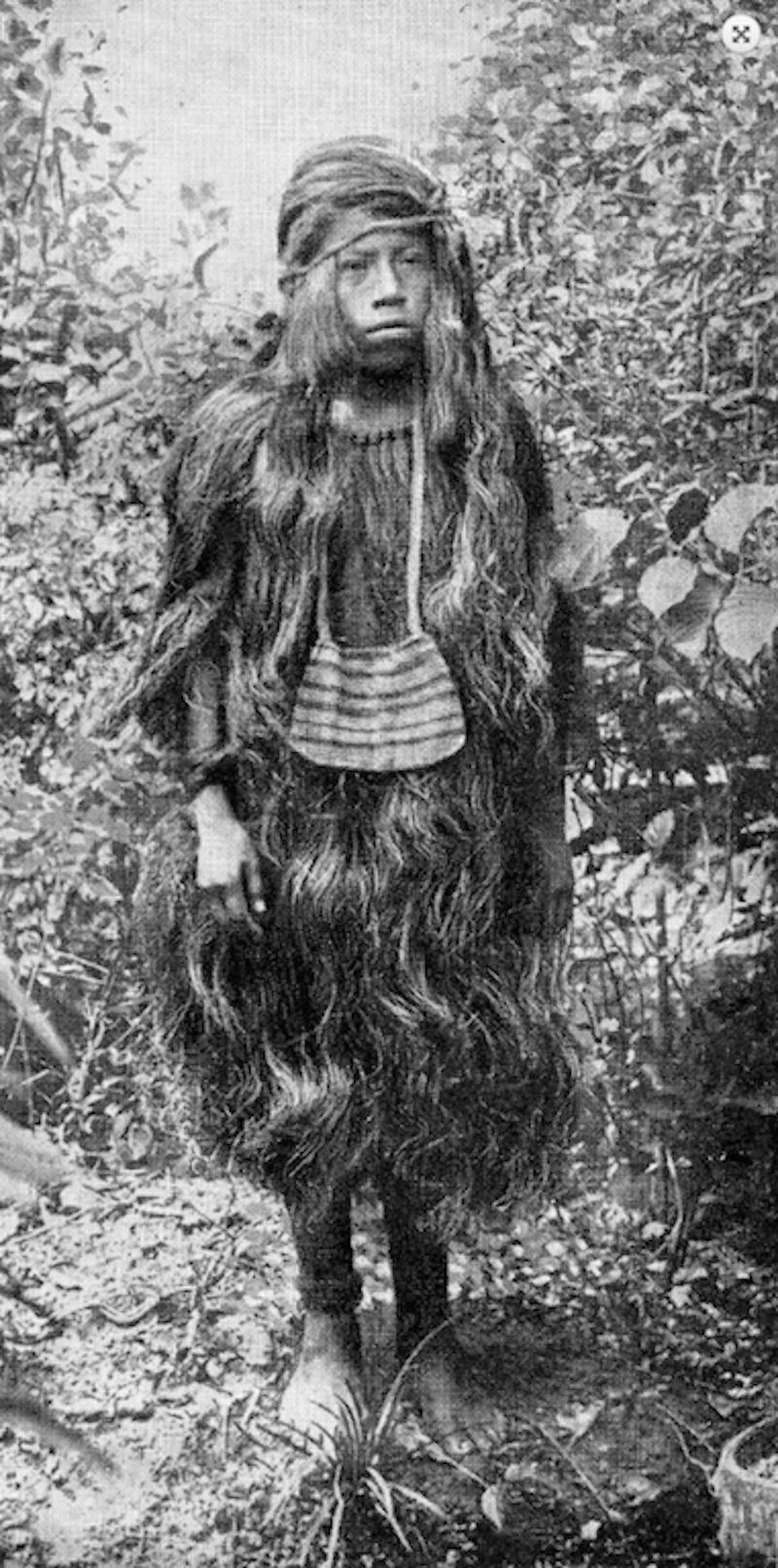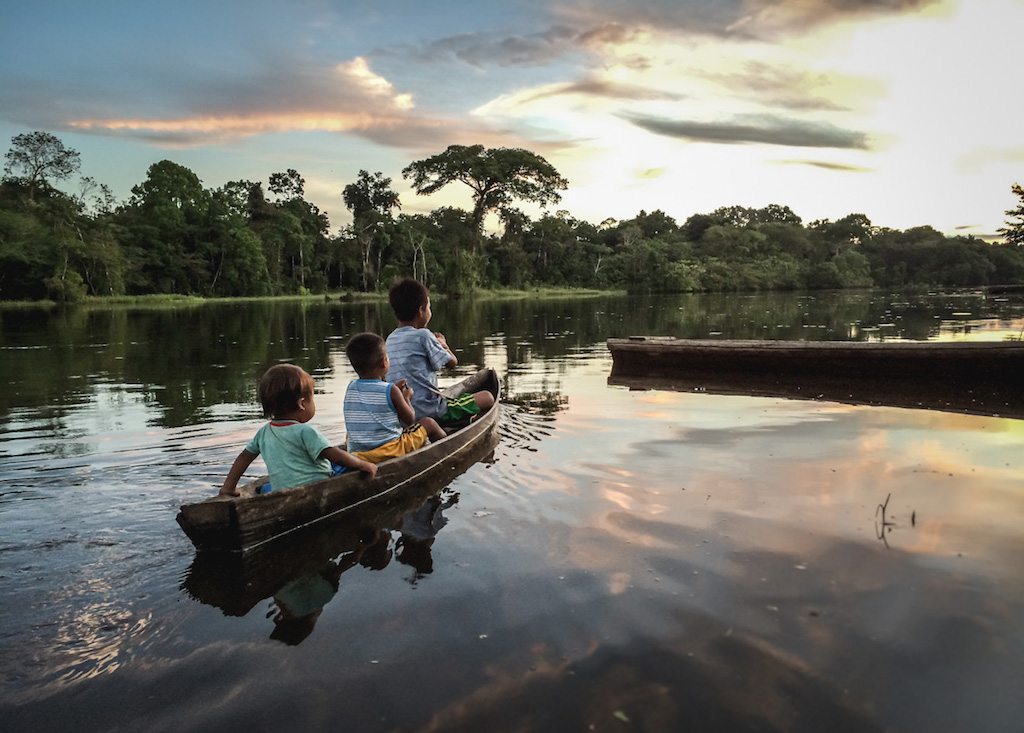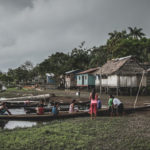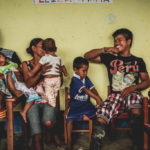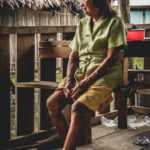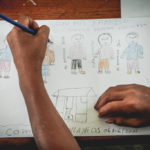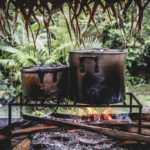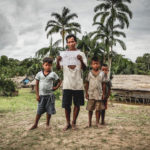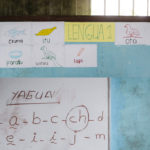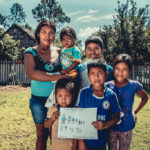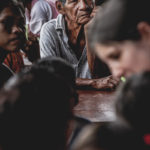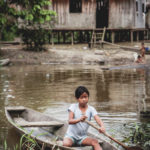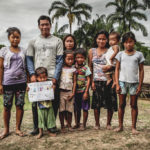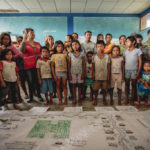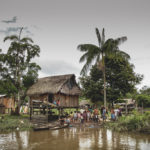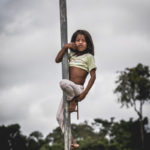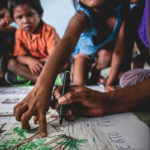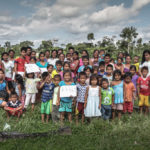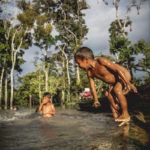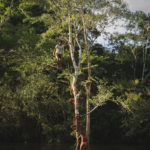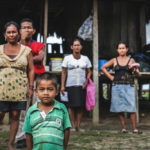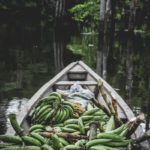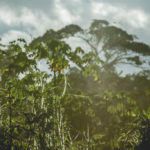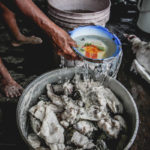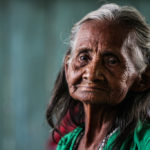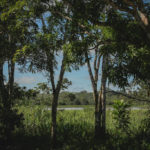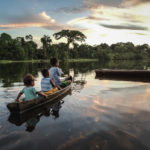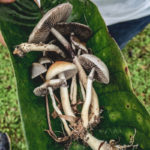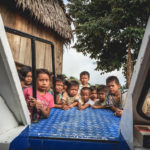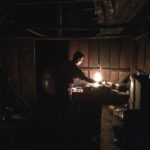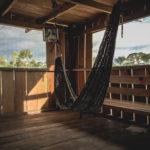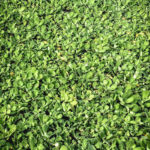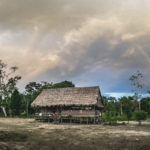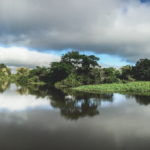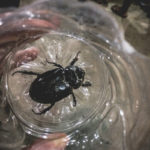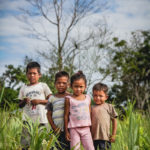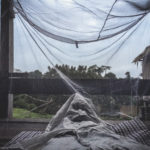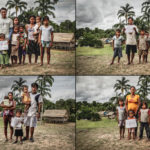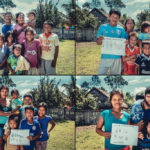I was hired by the Peruvian Ministry of Education to document a series of workshops being hosted in several of the remaining Yagua and Ticuna communities. The focus of the workshop is to draw attention to the safety issues plaguing youth and adults alike in these remote regions. The river here is calm and, at face value, resembles an idyllic paradise of sunny blue skies and lush, green trees brimming with fresh fruit. But the truth is, this environment is harsh and unforgiving with numerous hidden threats. From alligators, snakes and the Candiru fish that threatens to swim up your urethra, to deadly insects and parasites like malaria and dengue, the dangers here come in all shapes and sizes. The lack of access to proper medical care in these remote regions can complicate even the simplest of injury or illness, making prevention the best medicine.
There are reportedly as few as 6000 Yagua remaining in the world.
Each community we visited had between 10 and 30 families, all with a multitude of young children. As part of the workshop, residents were asked to collectively draw a large map of their community. They would then discuss and mark out all the possible threats to their safety on the map. This map would then be prominently displayed in the village as a reference and reminder to the families. Residents were also encouraged to draw pictures of their own families and then pose for a portrait holding their illustration. The results are some fantastic photos that exemplify the modern day Yagua and Ticuna communities remaining along the Amazon river.
Many indigenous died in conflicts or by exposure to European disease, others fled to remote regions of the jungle.
The Yagua and Ticuna people have been living in this region as far back as the 1500’s. Thanks to the rubber boom of the late 19th century, Europeans began to exploit these indigenous people as slave labour to extract latex from the jungle. Many indigenous died in conflicts or by exposure to European disease, others fled to remote regions of the jungle. Since then, the unity and culture of the Yagua and Ticuna people has sharply declined. There are reportedly as few as 6000 Yagua remaining in the world.
YAGUA NATIVE circa 1924
